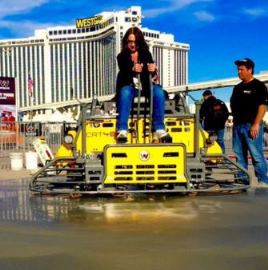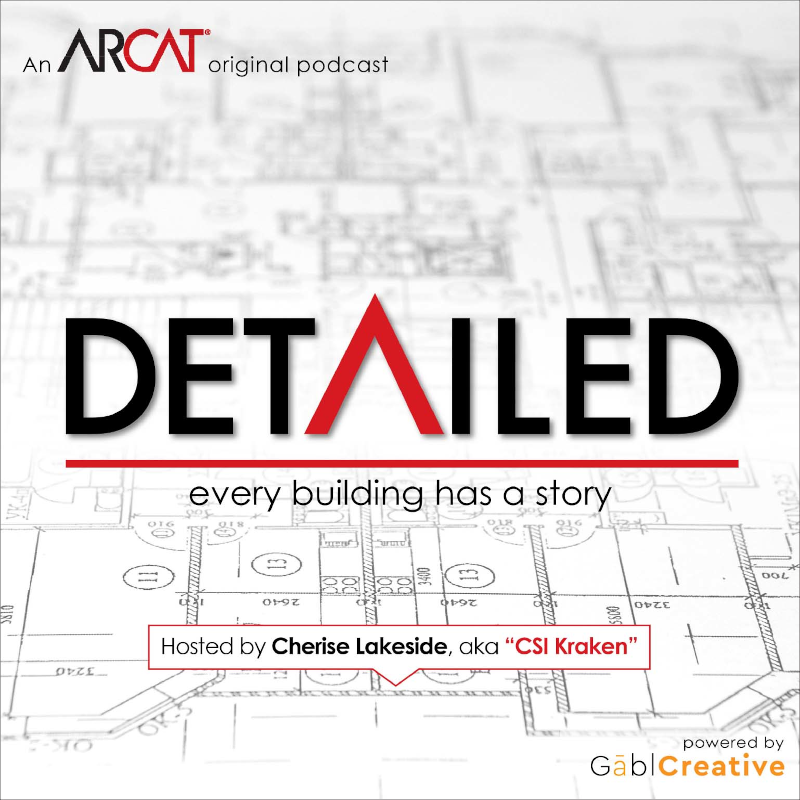|
Contributed by Cherise Lakeside This past February, for the first time, I attended the World of Concrete in Las Vegas. I was invited by the Tao Group for their Praxis event to do a presentation on Specs 101 for anyone who cared to attend. Tao Group is passionate about maintaining design intent and providing the best possible outcome for the Owner. I was thrilled to be asked to share some CSI contract document education with folks who traditionally do not get exposure to it.
Like anyone in our industry, I have areas where I am particularly passionate. One of those areas is better interaction and education for our emerging professionals. Another, and the subject of this blog, is improving communication, coordination and collaboration on our projects. I will take any opportunity that I can get to share this education across disciplines. I am especially grateful now that I had this opportunity at World of Concrete. I would venture to guess that I get out of my specifier cave a little more than some due to my rather aggressive involvement in CSI and ever increasing speaking engagements. This gives me the chance to talk to folks from a lot of disciplines which is invaluable. What I learned this week is that I need to get my hands dirty. Like a lot of people who work strictly as a specifier, I don’t have many opportunities to get out on the jobsites and talk to the people who are actually doing the work. There has been very little opportunity to get feedback from the people who are using and interpreting the specifications that I write. There has been almost no chance to see, first hand, how it all comes together. How it actually gets built. This has been a critical mistake and it changes today. I have done this Specs 101 class a number of times. It is geared to provide some very general knowledge of specifications, contract documents, roles and responsibilities and risk. You can only cover so much in 1.5 hours so I try to lightly hit a lot of pertinent areas to hopefully spark my attendees to ask more questions and get further education in contract documents and project delivery. I have presented this class to architects, contractors, engineers, product reps and manufacturers – in and outside of CSI. Not once has anyone told me that the information was not helpful. The attendees always walk away with some homework they intend to do because I said something they didn’t know or didn’t understand. At World of Concrete my audience for this particular presentation was approximately 50 concrete subcontractors. With the exception of a scattering of subs among my other presentations, I don’t typically see this group at CSI meetings or in my presentations. I was thrilled to have a chance to talk with them. I was thrilled not only because I want to know what I don’t know, but I also had a chance to clear up misconceptions about specifications. I wanted to learn how it really goes down once those documents leave my hands. I started with a couple of questions:
Damn if I hadn’t just received a 2×4 smack in the head. How have I been missing this knowledgeable and valuable group in my CSI adventures! How have I not been getting this crucial feedback so that I can do a better job? I also shared a few things with them:
It drives me insane when I see a continuing problem that doesn’t get fixed. What drives you crazy at work? That question always results in the areas we need to improve. This is one of those areas and change starts with me. There is no way that I am taking on concrete issues in construction in this blog. I don’t even pretend to be knowledgeable enough to do that. BUT I will tell you what I am going to do:
Today, I invite my CSI compatriots to do the same. World of Concrete was an amazing experience that I didn’t see coming. I now wish I would have stayed all week. I thank all of the subcontractors and tradesmen who took the time to share with me, show me things and let me play with the big toys. I have the utmost respect for the work that they do. I definitely hope to have the opportunity to attend next year and really get my hands dirty. I encourage anyone to go outside your industry and learn from others in the process. Be the change you wish to see in this world!
5 Comments
Edwin Essary
8/31/2016 12:27:38 pm
I've spent 32 years, with four different OEM's, in the design, manufacture, marketing, sale, field coordination, and the supervision of or consulting on maintenance, repair and modernization of vertical transportation equipment. It has definitely NOT been the same year 32 times!
Reply
9/14/2016 10:56:56 am
Good Job. Let's hope your action sets a trend.
Reply
5/22/2018 06:09:31 am
could you please tell me how much force require for cursing of M50 Mould
Reply
Leave a Reply. |
AboutLet's Fix Construction is an avenue to offer creative solutions, separate myths from facts and erase misconceptions about the architecture, engineering and construction (AEC) industry. Check out Cherise's latest podcast
Get blog post notifications hereArchives
March 2022
Categories
All
|


 RSS Feed
RSS Feed
